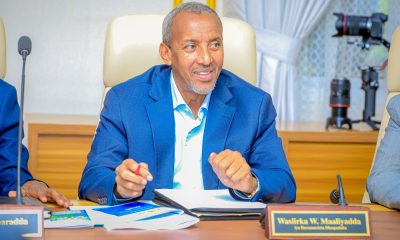Military
Replacing Aircraft Carriers with Bases in Somaliland: The U.S.-UAE’s Controversial Strategy
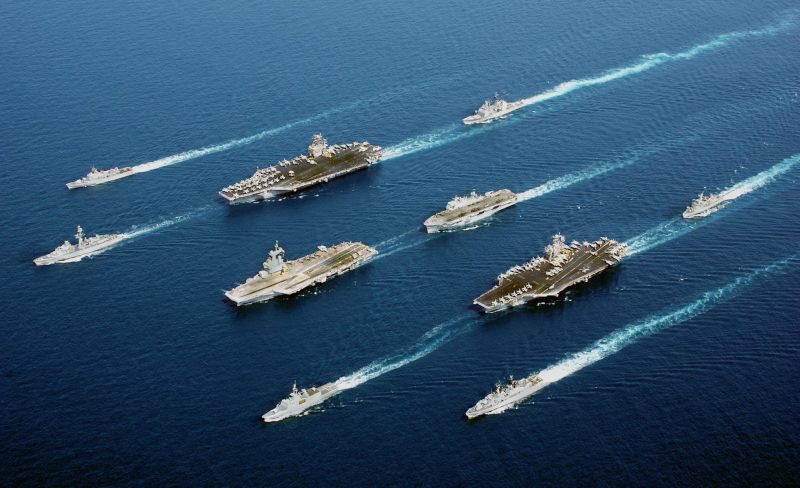
Exploring the Potential Impact of the U.S.-UAE Plan to Utilize Somaliland as a Strategic Military Base Amidst Regional Tensions and Global Implications
In a bold and contentious move, the United Arab Emirates (UAE) has proposed to the United States an alternative strategy to confront the Ansar Allah (Houthi) campaign in the Red Sea: replacing American aircraft carriers with military bases in Somaliland. This suggestion, which emerged from high-level discussions between UAE’s National Security Advisor Sheikh Tahnoon bin Zayed and U.S. National Security Advisor Jake Sullivan, signifies a significant shift in military strategy and has the potential to reshape the geopolitical landscape of the Horn of Africa and the Arabian Peninsula.
Somaliland offers a strategic advantage due to its location along critical maritime routes in the Red Sea and the Gulf of Aden. Utilizing bases in Somaliland would allow the United States to project power and maintain security in these vital waterways without the enormous costs and logistical challenges associated with deploying aircraft carriers. Moreover, the proximity of Somaliland to Yemen would enable more immediate responses to Houthi threats and piracy activities, enhancing maritime security in the region.
The UAE’s proposal underscores its broader ambitions to solidify its influence in the Horn of Africa and the Red Sea. By facilitating American military presence in Somaliland, the UAE aims to strengthen its strategic partnership with the U.S. while countering the Houthi threat and extending its geopolitical reach. This move also aligns with the UAE’s efforts to establish itself as a key player in regional security dynamics, particularly in the face of growing Iranian influence in Yemen through the Houthis.
The proposal is likely to provoke strong reactions from various regional actors. The central government in Mogadishu, which does not recognize Somaliland’s independence, would view the establishment of U.S. bases in Somaliland as a direct challenge to Somalia’s sovereignty. Additionally, countries such as Yemen, Saudi Arabia, and Egypt might perceive this move as a destabilizing factor in an already volatile region.
Saudi Arabia and Egypt, in particular, have vested interests in the Red Sea’s security and might oppose any actions that could shift the balance of power. The Yemeni government, already grappling with the Houthi insurgency, would be concerned about the broader implications of increased foreign military presence in the vicinity.
For the United States, the proposal presents both opportunities and challenges. Establishing bases in Somaliland would reduce reliance on aircraft carriers, potentially lowering operational costs and increasing flexibility. However, it would also require navigating complex regional politics and addressing the legal and diplomatic ramifications of operating in Somaliland.
Furthermore, the U.S. would need to consider the implications of deeper involvement in the Horn of Africa, a region plagued by instability and conflict. Ensuring the security of these bases against threats from local militant groups and addressing the humanitarian concerns associated with increased military presence would be critical.
The alliance between Somalia and extremist groups such as Al-Shabaab and ISIS poses an additional threat to Somaliland’s stability. Recent intelligence indicates that Somalia and these militant groups may be coordinating efforts to destabilize Somaliland, further complicating the region’s security landscape. The prospect of direct talks between Al-Shabaab and the Somali government, scheduled for July 22, underscores the need for vigilance and proactive measures to counter these threats.
The proposal to replace American aircraft carriers with bases in Somaliland represents a complex geopolitical gamble with far-reaching implications. While the strategic advantages are clear, the potential for regional backlash and internal challenges cannot be ignored. For Somaliland, this moment presents an opportunity to solidify its role as a key strategic partner, but only if it can address its internal vulnerabilities and navigate the intricate web of regional politics.
As the U.S. and UAE continue their discussions, the world watches with bated breath, anticipating the potential shifts in the balance of power and the unfolding of a new chapter in the geopolitics of the Red Sea and the Horn of Africa.
Military
Putin Orders Russia to Boost Size of Army by 180,000 Troops to 1.5 million
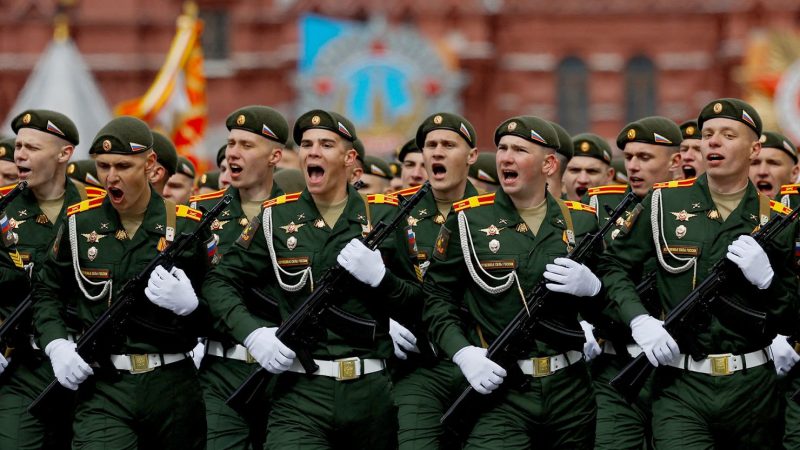
With an Increase of 180,000 Troops, Russia’s Military Expansion Stirs Controversy Amidst Rising Casualty Rates and Ukrainian Advances
President Vladimir Putin has decreed a significant expansion of the nation’s armed forces, commanding an increase of 180,000 troops. This latest order marks the third expansion since the onset of Russia’s invasion of Ukraine in February 2022, pushing the total number of Russian military personnel to an astonishing 2.4 million, including 1.5 million active troops. The new deployment will come into effect this December, as outlined in a decree published by the Kremlin on Monday.
This sweeping increase in troop numbers follows a particularly intense period of conflict. Last month, Ukraine launched a bold offensive into Russia’s southern Kursk region, marking the first foreign incursion into Russian territory since World War II. In response, Russia has intensified its military operations, aiming to drive Ukrainian forces out of Kursk and advance toward the strategic Ukrainian town of Pokrovsk in the eastern Donbas region.
Since the start of the invasion, Putin has overseen two previous expansions of military forces. In August 2022, he ordered an increase of 137,000 troops, raising the total number to just over 2 million personnel. This was followed by a partial mobilization in September 2022, which saw military reservists and citizens with combat experience drafted into service. The mobilization, which led to a mass exodus of Russian nationals seeking refuge in neighboring countries, was suspended in November 2023 after the target of 300,000 recruits was reportedly achieved.
In December 2023, Putin ordered another increase of 170,000 troops, bringing the total to 1.32 million active personnel. Despite these measures, the true extent of Russian military losses remains veiled in secrecy. Russian Defense Minister Sergei Shoigu reported 5,937 fatalities in September 2022, but no updated figures have been disclosed since.
In stark contrast, Ukrainian and Western intelligence estimates suggest far higher casualties. The General Staff of Ukraine’s military reported that Russia has lost approximately 616,300 troops, while the UK’s Ministry of Defense estimates losses exceeding 610,000. The dire situation is compounded by a high daily casualty rate, which is projected to average over 1,000 per day throughout September 2024 as Russia engages in extensive operations from Kursk in the north to Robotyne in the south.
Putin’s latest decree underscores a desperate bid to fortify Russia’s military presence amidst relentless Ukrainian resistance and mounting casualties. As the conflict drags on, the world watches closely to see how these massive troop increases will impact the ongoing war and the broader geopolitical landscape.
Military
As Global Powers Battle Over AI in Warfare, Who Will Define the Rules?
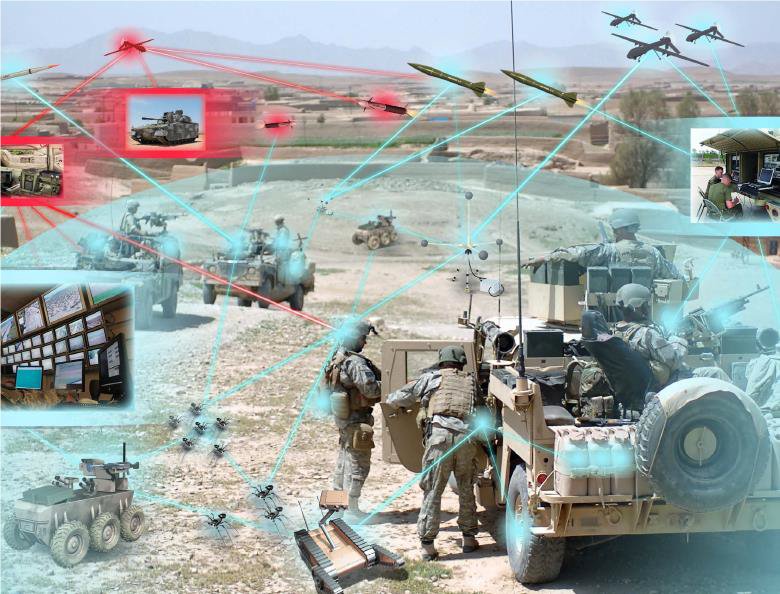
AI’s Battlefield: The Race to Control Military’s New Frontier
The world is on the brink of a high-stakes showdown over artificial intelligence (AI) in warfare, with the specter of a new arms race looming large. The 2020s have ushered in an era of unprecedented transformation, where AI’s dual-use nature—serving both civilian and military purposes—has sparked urgent debates about global governance. As nations scramble to integrate AI into their defense systems, the quest to regulate this powerful technology has never been more critical—or more contentious.
The integration of AI into military operations is akin to the advent of nuclear weapons, raising fears of doomsday scenarios and global instability. The urgency for a unified framework to govern military AI is palpable, as countries race to secure their technological edge. Despite some progress, such as the European Union’s AI Act and a UN General Assembly resolution, these initiatives fall short of addressing the rapid pace of AI development in warfare.
Since 2023, two significant frameworks have emerged: the REAIM Summit and the U.S.-led Political Declaration. The REAIM Summit, a Dutch-South Korean initiative, represents a bottom-up approach. It’s a sprawling attempt to gather 2,000 participants from 100 countries to debate and shape norms for military AI. The “Call to Action” from this summit aims to create a comprehensive framework through regional workshops and further discussions in Seoul in 2024. Its inclusive stance is meant to foster global collaboration but could lead to slow, fragmented progress.
In contrast, the U.S. Political Declaration is a top-down approach, directly addressing sovereign states. Launched in February 2024, it’s backed by 54 countries, including nearly all EU member states. The declaration outlines ten measures and six pledges to regulate military AI. Yet, its effectiveness is in question, given potential shifts in U.S. leadership and the geopolitical tensions with China and Russia. Both superpowers view AI as a game-changer, with Russia accelerating its AI efforts despite ongoing conflict in Ukraine, and China eyeing AI as a strategic asset in its regional ambitions.
The challenge of achieving a universally agreed-upon convention is daunting. The rapid evolution of AI outpaces traditional arms control measures, making prolonged negotiations seem futile. While the REAIM Summit provides a platform for broader engagement, the Political Declaration serves as a pragmatic, albeit less ambitious, attempt to set international norms. However, the lack of support from major powers and the Global South complicates the process.
Europe, despite lagging behind the U.S., China, and Russia in military AI, has a pivotal role to play. The EU’s Defence Innovation Office in Kiev highlights its commitment to understanding and leveraging military AI insights. For Europe, the stakes are high. By aligning with REAIM and advocating for the Political Declaration, Europe could play a crucial role in shaping a global governance framework for military AI, potentially tempering the rise of a new arms race.
As the global community grapples with the implications of military AI, the urgency for effective regulation is undeniable. Europe must lead the charge in making military AI governance a priority, balancing the ambitions of the REAIM Summit with the practicalities of the Political Declaration. The question remains: can the world’s powers find common ground before the technology they seek to control accelerates beyond their grasp?
Congress’s War on China: Biotech, Drones, and Farmland Under Siege
Editor's Pick
US Intel Unveils Russian Military’s Hidden Role with Houthis in Yemen
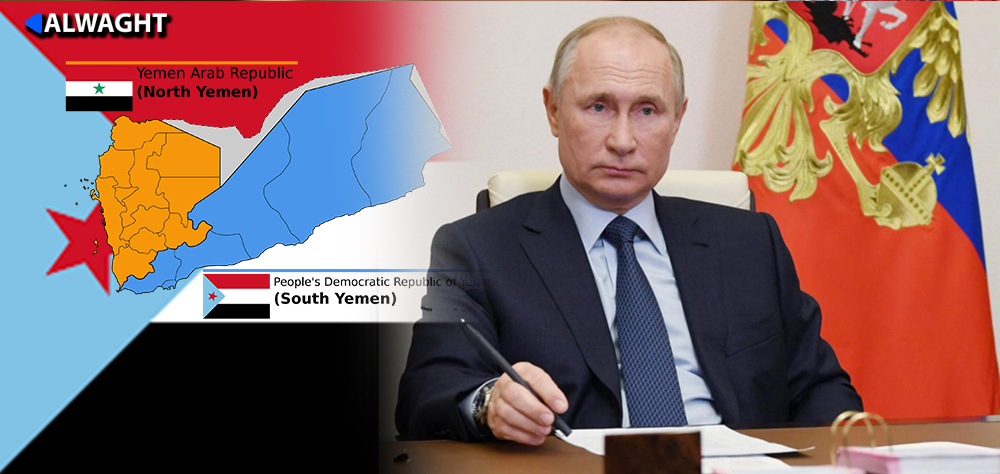
GRU Officers Advising Iran-Backed Rebels on Red Sea Maritime Attacks
US intelligence suggests that Russian military intelligence officers, specifically from the GRU, have been operating within Houthi-controlled regions of Yemen. Their mission? To aid the Iran-backed Houthis in targeting commercial vessels in the Red Sea. This covert operation has been ongoing for several months, a senior US official disclosed under the condition of anonymity.
The precise nature of the GRU’s involvement remains shrouded in secrecy, but their advisory role is clear. The Houthis, claiming solidarity with besieged Palestinians in Gaza, have intensified their attacks on maritime targets, drawing on Russian expertise to bolster their campaign.
This development signals Russia’s deepening ties with the Houthis, a move that could reshape the balance of power in the region. Earlier this year, President Vladimir Putin contemplated arming the Houthis with advanced anti-ship cruise missiles, a plan thwarted only by Saudi Crown Prince Mohammed bin Salman’s intervention. Yet, concerns linger in Washington that Putin might still use the Houthis as leverage against US policies, especially concerning Ukraine.
Samuel Ramani, a renowned expert on Russia’s Middle Eastern policies, suggests that deploying technical advisors might be Putin’s middle ground, allowing him to deepen cooperation without overtly escalating military support. The move aligns with Russia’s broader strategy of embedding itself in regional conflicts, as seen with its mercenaries in Libya and military presence in Syria.
The timing of this revelation is critical. The Houthis have ramped up missile and drone attacks on commercial vessels since Hamas’ assault on Israel on October 7th. While US retaliatory strikes on the Houthis have been ineffective, the group’s attacks have been selective, sparing ships linked to Russia, Iran, and China. This selective targeting underscores the Houthis’ maritime intelligence limitations and their reliance on open-source data, further highlighting the need for GRU expertise.
Publicly, Russia’s engagement with the Houthis has become more visible. In July, Putin’s deputy foreign minister met with a Houthi delegation in Moscow, signaling a closer alliance. The US anticipates that Iran’s “axis of resistance,” which includes the Houthis, will play a pivotal role in any retaliatory actions against Israel.
Former US officials suggest that Putin might view the escalating Middle East tensions as an opportunity to pressure the US, drawing a parallel between Ukraine’s attacks on Russian vessels in the Black Sea and potential Houthi actions in the Red Sea. General Frank McKenzie, ex-commander of US Central Command, hinted that Putin could see this as a form of “Red Sea payback.”
Despite the mounting evidence, official responses from the White House and the Department of Defense remain absent. The US intelligence community, however, is on high alert, closely monitoring the situation as the geopolitical stakes in the region continue to rise.
Russia’s strategic maneuvering in Yemen is part of a broader pattern. With the Wagner Group’s activities in Libya and the Sahel, and military deployments in Syria, Russia’s footprint in the Middle East is expanding. The potential for a Russian naval base in Sudan’s Red Sea coast only adds to this intricate geopolitical web.
In this complex game of power and influence, Putin’s decision to place GRU officers in Yemen reflects a calculated move to enhance the Houthis’ operational capabilities while safeguarding Russian interests in the Red Sea. As tensions escalate, the world watches closely, bracing for the potential fallout from this clandestine collaboration.
Africa
U.S. Military Executes High-Stakes Crisis Response Drill in Somalia
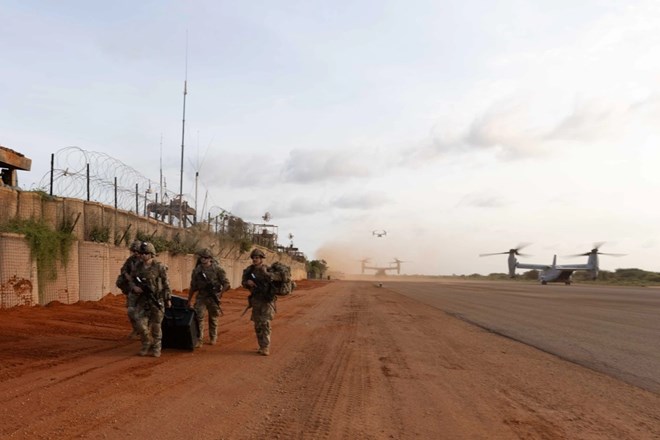
EARF Enhances Rapid Deployment and Security Measures in Kismayo
In a display of military precision and readiness, U.S. soldiers from the East Africa Response Force (EARF) engaged in a multi-day crisis response exercise at Cooperative Security Location (CSL) Kismayo, Somalia, on July 21, 2024. This critical drill aimed to sharpen the unit’s rapid deployment capabilities, security reinforcement protocols, and combat casualty care proficiency.

Part of the Combined Joint Task Force-Horn of Africa (CJTF-HOA), the EARF includes personnel from Task Force Paxton of the Pennsylvania Army National Guard, designed for swift crisis response within the AFRICOM area. This recent exercise underscored their ability to provide limited-defense crisis response and essential support to U.S. embassies and missions across the region.
The exercise’s primary goal was to test the EARF’s speed in deploying and reinforcing security measures to protect military personnel effectively. Additionally, combat casualty care training was incorporated to ensure readiness for real-world scenarios that may arise in this volatile region.
Colonel James Riley, commander of CJTF-HOA, emphasized the importance of such exercises, stating, “Our ability to quickly deploy and reinforce security measures is crucial for maintaining the safety of our personnel and supporting our allies in the region.”
Echoing this sentiment, Major General William Zana, CJTF-HOA commander, highlighted the broader significance of these operations. “Our operations are vital for regional stability and the protection of U.S. and coalition interests. These exercises demonstrate our commitment to a ‘no-fail’ mission across the area of operation,” Zana said.
The crisis response drill in Kismayo not only showcased the EARF’s rapid deployment prowess but also reinforced the U.S. military’s dedication to maintaining security and stability in East Africa. This exercise is a testament to the unwavering commitment to protecting both U.S. interests and regional allies, ensuring readiness in the face of any potential crisis.
Military
US Boosts Arctic Strategy to Counter Russian and Chinese Advances

New Pentagon Strategy Enhances Surveillance and Cooperation with Allies Amid Climate Change Concerns
The Pentagon’s 2024 Arctic Strategy aims to bolster US intelligence and enhance collaboration with allies to thwart Russian and Chinese ambitions in the region. Deputy Defense Secretary Kathleen Hicks emphasized that the melting Arctic ice, a consequence of climate change, is turning strategic concerns into immediate tactical challenges.
The strategy includes expanding ground-based, space-based, and long-range radar sensors to monitor adversarial activities, while boosting unmanned aerial reconnaissance and communication capabilities.
The US has already invested millions in Arctic infrastructure, but the region’s vast distances and harsh conditions require more resources. The strategy underscores the significance of NATO’s expansion with Sweden and Finland joining the alliance, enhancing joint exercises and cooperation to counter increased Russian and Chinese activities.
Hicks highlighted ongoing Russian infrastructure investments in the Arctic and growing Chinese activities, often under the guise of research. This has led to increased Russian-Chinese cooperation, demonstrated by joint naval patrols near Alaska last August. Despite being somewhat superficial, the Pentagon anticipates their military relationship will evolve.
Deputy Assistant Secretary of Defense for the Arctic, Iris Ferguson, pointed to China’s investments in Russian energy as bolstering Russia’s actions in Ukraine. She noted China’s attempts to internationalize and influence the Arctic region, marking them as a long-term pacing challenge for the US.
The evolving dynamics and strategic importance of the Arctic necessitate robust US responses to maintain regional stability and counter adversarial moves. The Russian and Chinese embassies in Washington have not commented on the new strategy.
Military
More Patriots and F-16s for Ukraine, But Deep Strikes in Russia Remain Off-Limits
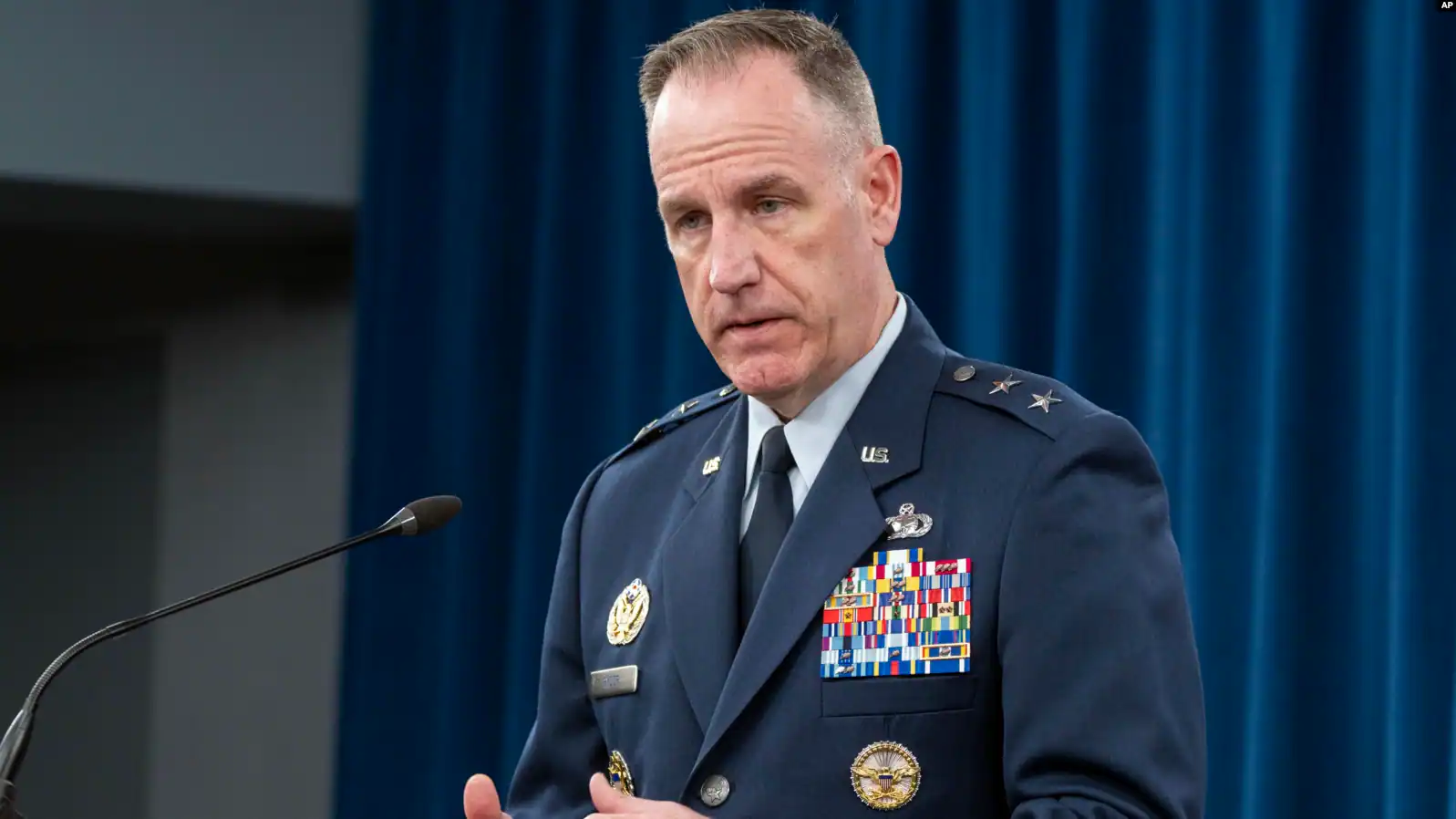
U.S. Enhances Ukraine’s Defense Capabilities Amid Escalating Conflict, Avoids Provoking Wider War with Long-Range Strikes
In a crucial pivot to bolster Ukraine’s defense, the United States has ramped up support with additional Patriot air defense systems and F-16 fighter jets. Yet, despite Ukrainian appeals for greater flexibility to strike deeper into Russian territory, the U.S. remains firm on its current policy, avoiding actions that could escalate the conflict into a broader war.
In a revealing interview with Voice of America, Pentagon Press Secretary Major General Pat Ryder elaborated on these critical decisions, shedding light on the intricacies of U.S. support for Ukraine amid the ongoing conflict with Russia.
President Biden recently announced the deployment of additional Patriot batteries to Ukraine, a move underscoring the high priority placed on enhancing Ukraine’s air defense. When pressed about the timeline for delivery, Ryder emphasized operational security but assured that efforts to expedite these systems are underway. The urgency is palpable, especially after recent Russian missile strikes, including a devastating attack on a children’s hospital in Kyiv.
Ryder acknowledged that the Patriot systems would require Ukrainian soldiers to undergo extensive training to ensure their effective deployment. “Air defense for Ukraine has been a priority for Secretary Austin and the U.S. government for a while now,” Ryder stated, highlighting the continuous efforts to equip Ukraine against relentless Russian missile assaults.
The arrival of F-16 fighter jets, another significant boost to Ukraine’s defense arsenal, comes with its own set of challenges. These high-tech aircraft will be prime targets for Russian forces. Ryder detailed how the U.S., alongside Denmark and the Netherlands, is leading efforts to train Ukrainian pilots and maintainers on the complex systems. This comprehensive training is crucial for ensuring the jets’ operational readiness and survivability in a hostile environment.
Despite these advancements, the U.S. maintains a cautious stance on Ukraine’s use of long-range weapons, particularly the ATACMS missiles. Ukrainian President Volodymyr Zelenskyy has repeatedly called for lifting restrictions on these weapons to strike deeper into Russian territory. However, Ryder reiterated that the U.S. policy remains unchanged, driven by concerns over potential escalation. “We don’t want to see unintended consequences and escalation to make this a broader conflict,” Ryder explained, emphasizing the delicate balance of providing robust support while avoiding actions that could widen the war.
The Pentagon’s strategy includes recent permissions allowing Ukraine to strike Russian targets just across the border, a move aimed at defending regions like Kharkiv from immediate threats. Yet, Ryder pointed out the importance of considering the broader implications of deeper strikes inside Russia. “You have to look at the second and third-order effects in terms of potential escalation,” he noted, underscoring the careful calculus behind U.S. military support.
In addition to enhancing Ukraine’s immediate defense capabilities, long-term support plans are also taking shape. NATO’s announcement of a new command center in Wiesbaden, Germany, is a significant step toward coordinated and sustained assistance for Ukraine. This three-star command center will focus on training and security assistance, aligning efforts with the Ukraine Defense Contact Group to ensure seamless support.
As Ukraine aspires to join NATO, this initiative will play a pivotal role in building interoperability and strengthening Ukraine’s military capabilities. “This will be complementary to and supportive of the Ukraine Defense Contact Group,” Ryder explained, highlighting the strategic importance of this command center in preparing Ukraine for future NATO membership.
The U.S. continues to walk a tightrope, providing substantial support to Ukraine while meticulously avoiding actions that could provoke a wider war. As the conflict evolves, the Pentagon remains steadfast in its commitment to helping Ukraine defend its sovereignty without crossing lines that could trigger dangerous escalations. This careful balancing act is crucial as the world watches the unfolding drama in Eastern Europe.
Military
Latvian Foreign Minister: Putin is Counting on Western Fatigue
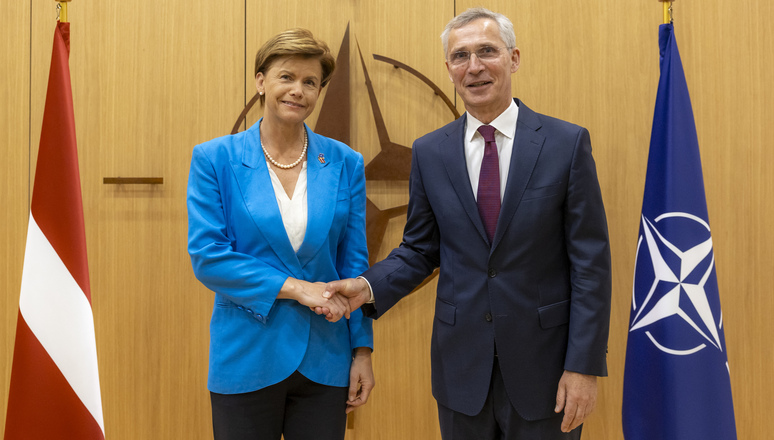
In the shadow of a brutal missile attack on Ukraine, NATO leaders convened in Washington, reaffirming their support for Ukraine amid ongoing Russian aggression. Latvian Foreign Minister Baiba Braze, in a candid interview, stressed the importance of Western unity and unwavering support for Ukraine.
Reflecting on Latvia’s 20 years in NATO, Braze highlighted the importance of deterrence and defense, noting that while there is no immediate military threat to the Baltics, a victory for Ukraine is crucial in preventing further Russian aggression. She emphasized the need for a robust policy to contain and degrade Russia’s military capabilities, underscoring that NATO’s strength lies in its collective security and proactive measures.
The recent missile strikes, including the devastating attack on Kyiv’s Okhmatdyt children’s hospital, underscore the barbarity of the Kremlin. Braze called for increased air defenses and the lifting of restrictions on Ukraine’s ability to strike legitimate military targets within Russia. She reiterated that such attacks only reinforce the need for comprehensive support to Ukraine, including advanced military capabilities like long-range precision strikes.
As the summit discussed Ukraine’s path to NATO membership, Braze emphasized that winning the war is the crucial first step. Victory for Ukraine, defined by its sovereignty and independence, is the ultimate goal. This commitment to Ukrainian victory is shared by all NATO allies, who are united in providing the necessary military aid and support.
Braze acknowledged the challenges faced by Ukraine, noting the resilience and success of Ukrainian forces in defending their territory against a nuclear-armed neighbor. The ongoing war, now in its third year, has defied Russia’s expectations of a quick victory. The unwavering support from the West has been pivotal, and Braze assured that this support will not waver.
Putin is counting on the West to grow weary, but Braze made it clear that this is not going to happen. The determination to support Ukraine remains steadfast, with a clear understanding that Ukraine’s fight is a fight for the principles and security of the entire transatlantic alliance. The predictability and sustainability of this support are crucial in ensuring that Ukraine can continue its defense and ultimately achieve victory.
In conclusion, the NATO summit highlighted the critical role of Western unity in confronting Russian aggression. Latvia’s Foreign Minister Baiba Braze’s insights underscore the necessity of continued, unwavering support for Ukraine. As NATO reinforces its commitments, the message is clear: the transatlantic alliance stands firm, and Putin’s hopes for Western fatigue are in vain.
Military
U.S. to Complete Withdrawal from Niger Base on Sunday

The United States is set to complete its withdrawal of forces and equipment from an air base in Niamey, the capital of Niger, by Sunday, marking the occasion with a joint ceremony. The next phase involves the exit from a Niger drone base, scheduled for completion in August.
These departures comply with a September 15 deadline agreed upon by the U.S. and Niger’s ruling junta. The new military leaders of Niger ordered U.S. troops to leave following a coup in Niamey last year. Major General Kenneth Ekman, who is coordinating the exits, indicated that most U.S. forces will be relocated to European locations, though small teams have been moved to other West African countries.
Despite withdrawing some valuable equipment from the bases, the U.S. is not destroying the equipment and facilities left behind. Ekman emphasized the importance of leaving things in good condition, saying, “Our goal in the execution is, leave things in as good a state as possible. If we went out and left it a wreck, or if we went out spitefully, or if we destroyed things as we went, we’d be foreclosing options that both nations need for the future. And our security objectives are still entwined.”
The withdrawals, particularly from the drone base, represent a significant setback to U.S. counterterrorism missions in the Sahel. This vast African region is plagued by insurgents linked to al-Qaida and Islamic State groups. Ekman, who is the director of strategy at U.S. Africa Command, noted that other African countries concerned about Sahel-based insurgent threats have approached the U.S. for partnership in combating militants.
“Niger was immensely helpful for us as a location because it was in the Sahel and it was adjacent to those areas where the threat is most concentrated,” Ekman explained. The challenge now will be accessing the area from outside Niger, complicating U.S. counterterrorism efforts.
As the U.S. adjusts its strategy in West Africa, the focus will be on maintaining regional security and countering extremist threats despite the logistical hurdles posed by the withdrawal from Niger.
-
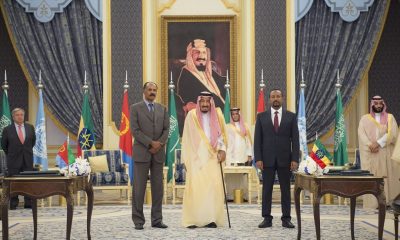
 Analysis2 weeks ago
Analysis2 weeks agoSaudi Arabia’s Billion-Dollar Bid for Eritrea’s Assab Port
-

 Somaliland2 months ago
Somaliland2 months agoSomaliland and UAE Elevate Ties to Comprehensive Strategic Partnership
-

 Africa12 months ago
Africa12 months agoHow Somaliland Could Lead the Global Camel Milk Industry
-

 Analysis12 months ago
Analysis12 months agoIran escalates conflict, attacking Israel; US forces help Israel to intercept Iranian projectiles
-

 Analysis11 months ago
Analysis11 months agoIsrael and Iran on Edge: Tensions Escalate Amidst Rising Threats
-

 Top stories10 months ago
Top stories10 months agoGunmen Kill 11 in Southeastern Nigeria Attack, Army Reports
-

 TECH10 months ago
TECH10 months agoZimbabwe Approves Licensing of Musk’s Starlink Internet Service
-

 Analysis11 months ago
Analysis11 months agoFacts in the Trump Courtroom vs. ‘Facts’ in the Court of Public Opinion









